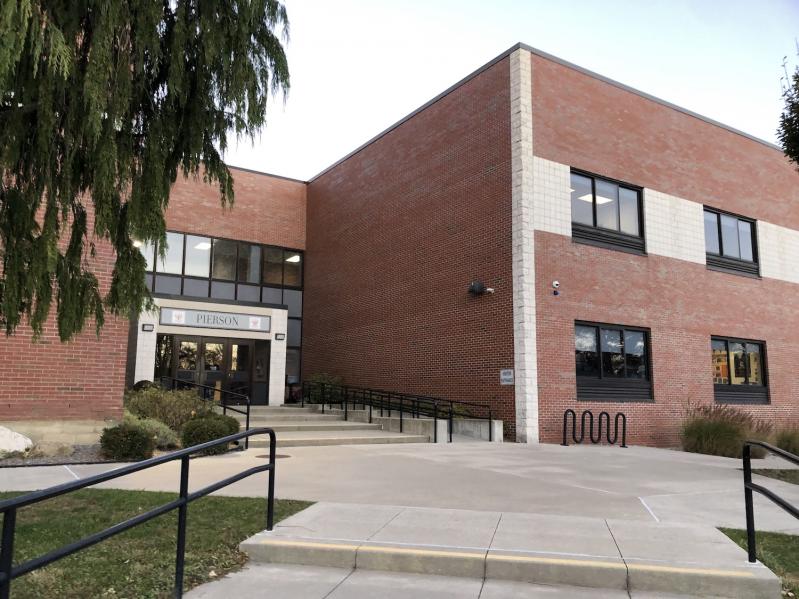Jennifer Buscemi, the Sag Harbor School District’s business administrator, started off her budget presentation at the school board meeting Monday night by speaking about the federal grants the district receives and how the district would be affected if they were to be cut.
“Because of all the uncertainty right now with the federal government,” she said, “we wanted to just start the conversation tonight and give everyone an overview of our federal grants, federal grant funding, and talk about whether or not this would have an impact at all on our budget next year, if for some reason any of these grants are cut.”
The district receives about 1 percent of direct federal funding through grant programs. If those grants are cut or ended, the district would be able to cover the programs they pay for, said Ms. Buscemi.
“We do have contingency money in the budget on salaries,” she told the board, “so if this money is cut, during the year or midyear, we would still be able to cover the costs of providing these programs for students.”
“If we did have a year when we would not be able to cover the costs,” she continued, “we would be able to use unassigned fund balance to cover the cost for any of these types of programs.”
For this current school year, the school was approved to receive $472,531.67 in federal grants, which stay at roughly the same amount every year. They are split into three major categories: Grants under the Individuals with Disabilities Education Act, Title grants, and grants for the National School Lunch program.
The largest grant is an I.D.E.A. grant of $279,869, which covers portions of salaries for a transition coordinator, a reading specialist, and a one-on-one aide for extracurricular activities. The second largest is a Title I grant of $65,661, allocated specially for a math teacher and a reading teacher who provide support for at-risk students, as well as teaching assistants who provide that support during the extended day program.
The Title grants also help cover teacher development, including registration, travel, and conference costs for professional development for the international baccalaureate program, and workshops for curriculum and state learning standards.
“We have no one teacher or staff member that is supported 100 percent by any of these grants,” Ms. Buscemi said, noting that if it were to lose this grant, the district would not have to fire anyone.
The funds for the National School Lunch program is a bit trickier. At present the district receives $69,821.67, which helps fund meals for a number of students. Right now 30 percent of Pierson Middle and High School students participate, as well as 11 percent of Sag Harbor Elementary School students.
This could change, however, as Gov. Kathy Hochul and the State Legislature have proposed a free school breakfast and lunch program in this year’s state budget. If it is approved, Ms. Buscemi estimates that participation would “at least double.”
There is no guarantee this program will be approved or put in place. However, “If this goes through, the free breakfast and lunch program can potentially save every student $1,161 per year, if they receive both meals for the 172 days that we serve meals,” Ms. Buscemi said.
“There’s also some question,” she added later, “that the state is relying on federal funds to provide this to students, and the federal government may at any time cut the funds. Right now, the funds are not cut.”
The Trump administration has already cut funds for farm-to-school programs, but that has not affected the national school lunch program. If there are major cuts to the lunch program, from either the state or federal government, Ms. Buscemi indicated that the school may “have to start charging students again, midyear.”
While taking the board through an overview of the proposed budget, Ms. Buscemi also touched on an increase for materials and supplies, from $789,552.20 in the current budget to $807,590 in the next fiscal year.
“At what point would you, from an accounting perspective, budget and kind of think about how tariffs might apply?” asked Jordana Sobey, board vice president.
Ms. Buscemi indicated that tariffs “definitely could affect” items the district plans to purchase next year, but said there was no way right say to predict whether their prices will change. “It’s the same thing as Covid,” she said. “When we had Covid, a lot of the vendors with contracts out there actually had to step back and say, we can’t even honor the prices of the contract anymore.”
If there are any significant changes, she concluded, the district may have to look for different vendors and places to purchase equipment and materials. On the bright side, she said, Sag schools are well funded with reserves, and by an unassigned fund set aside if prices exceed what the budget allows.
Jeff Nichols, the superintendent, noted that the best way to think may be through an inflationary lens, and that the district may not see changes happening until planning for the 1926-27 school year begins.
The board will do a full review of the proposed budget on April 23 before deciding whether to adopt it and put it on the ballot for May 20. By that time Ms. Buscemi expects the state budget to have been approved, and any effects it might have here will have become known. With that in mind, the school board will meet again on May 12, to discuss the district’s strategy should the budget vote on the 20th fail.

